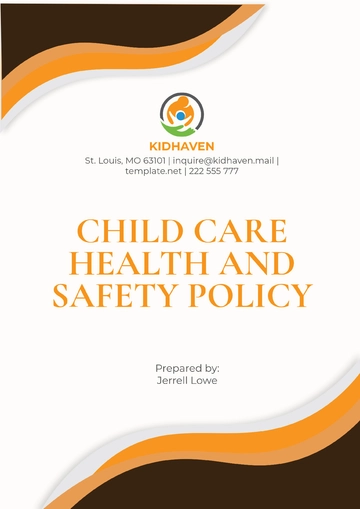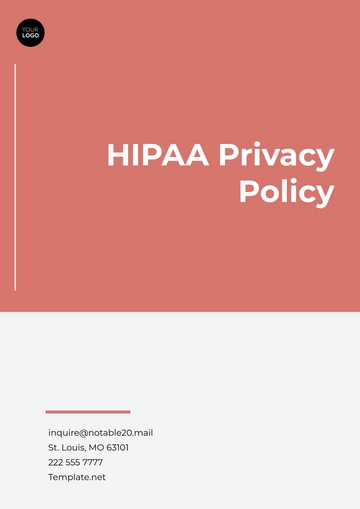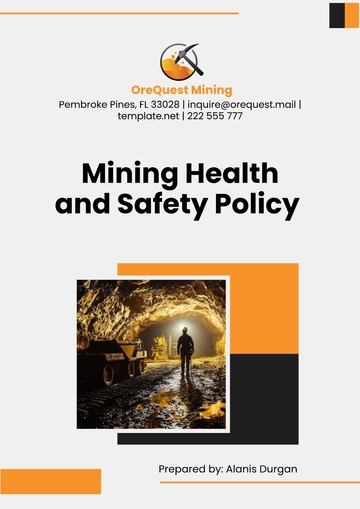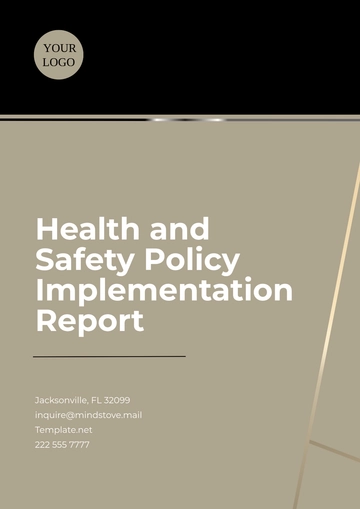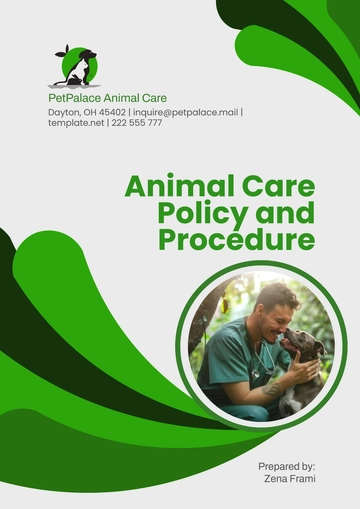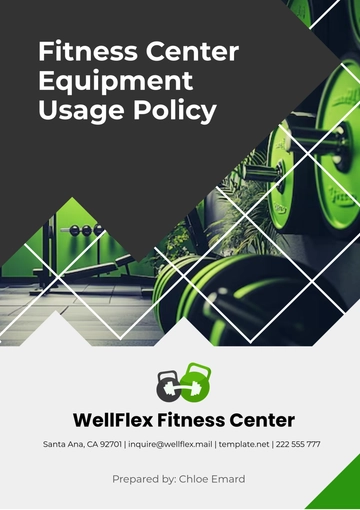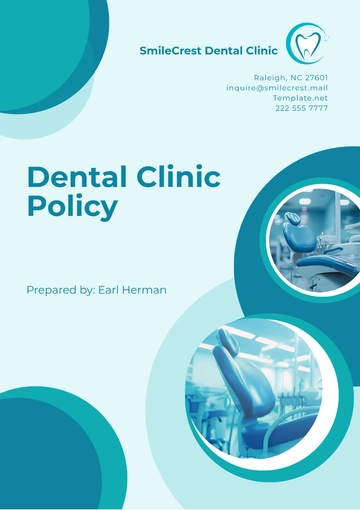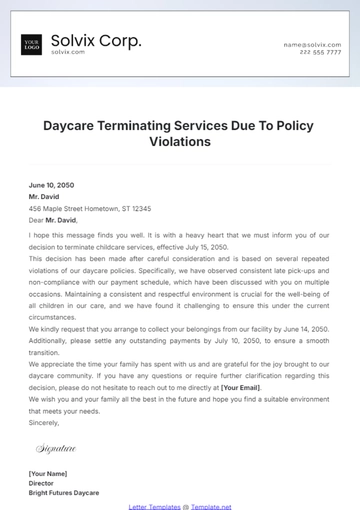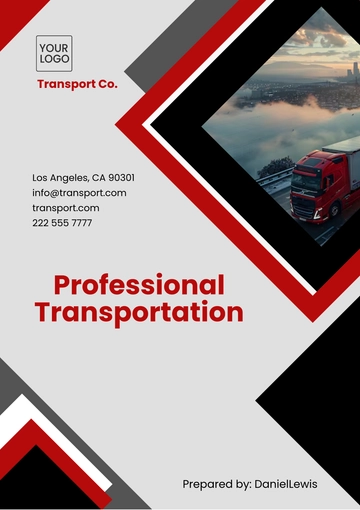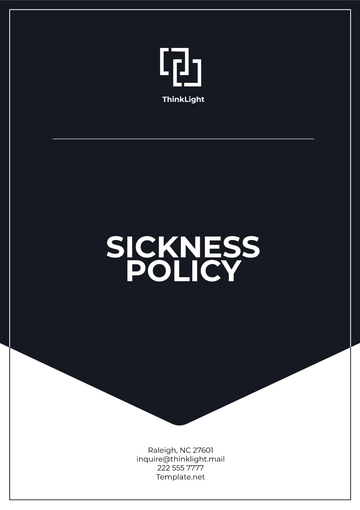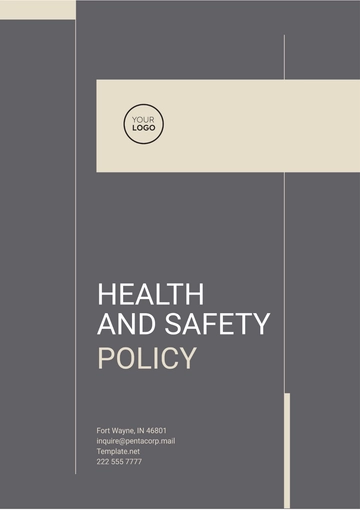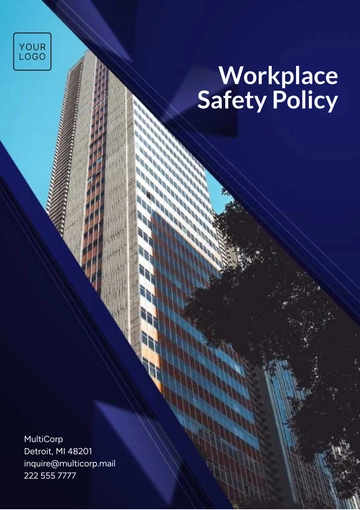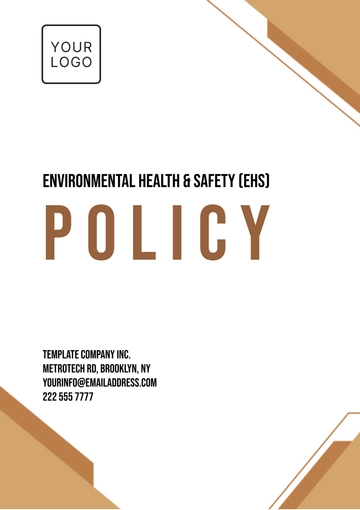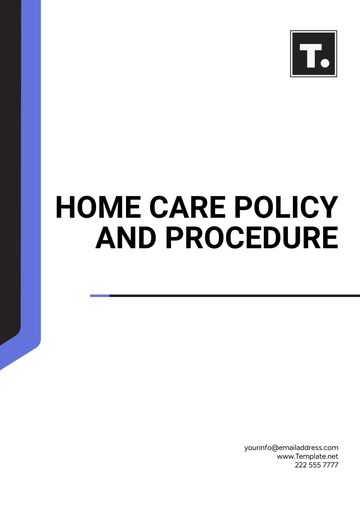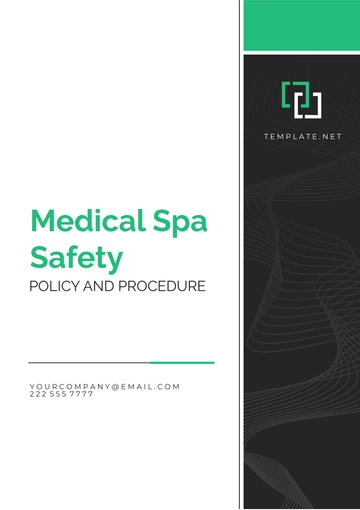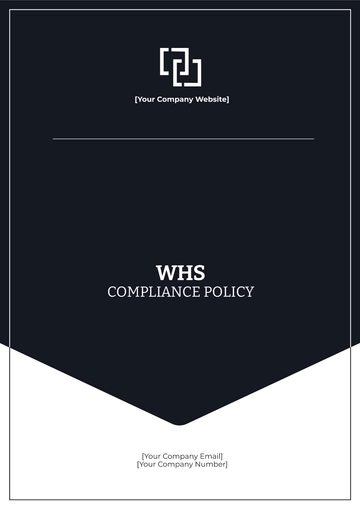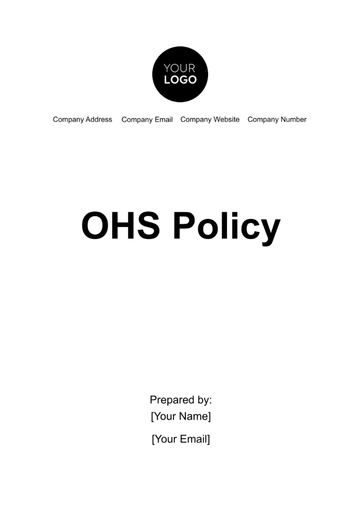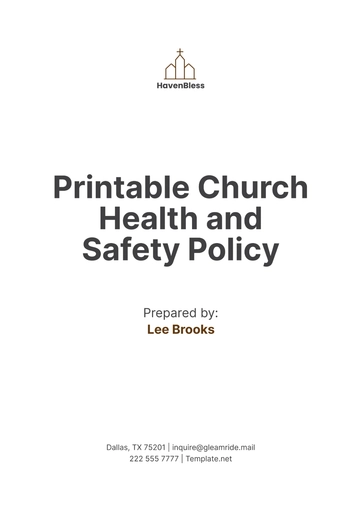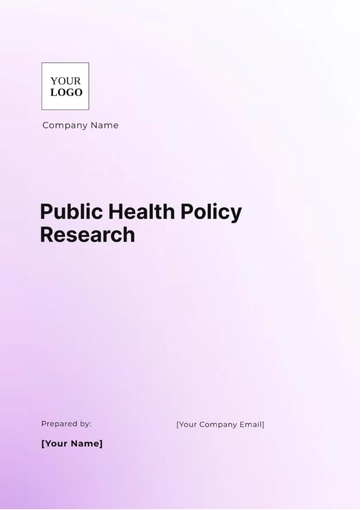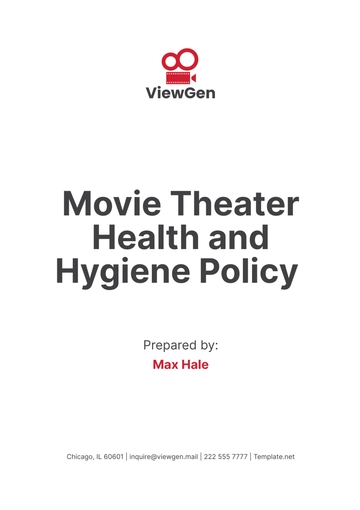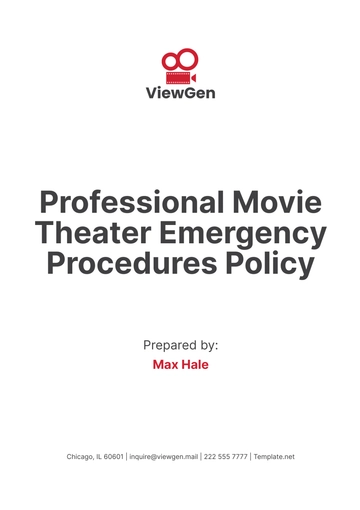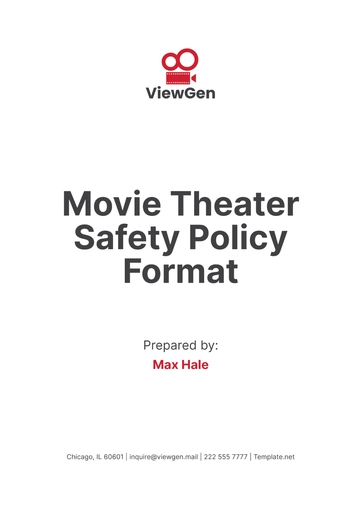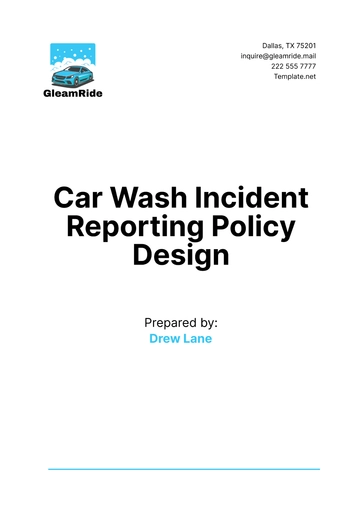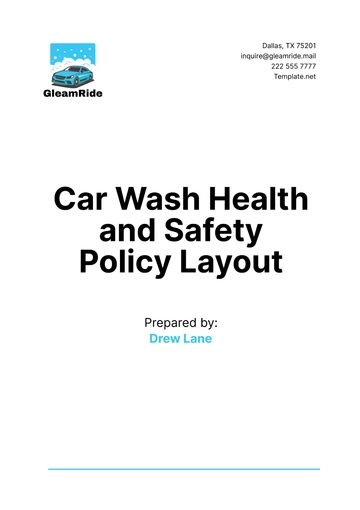Free Transport Health %26 Safety Policy
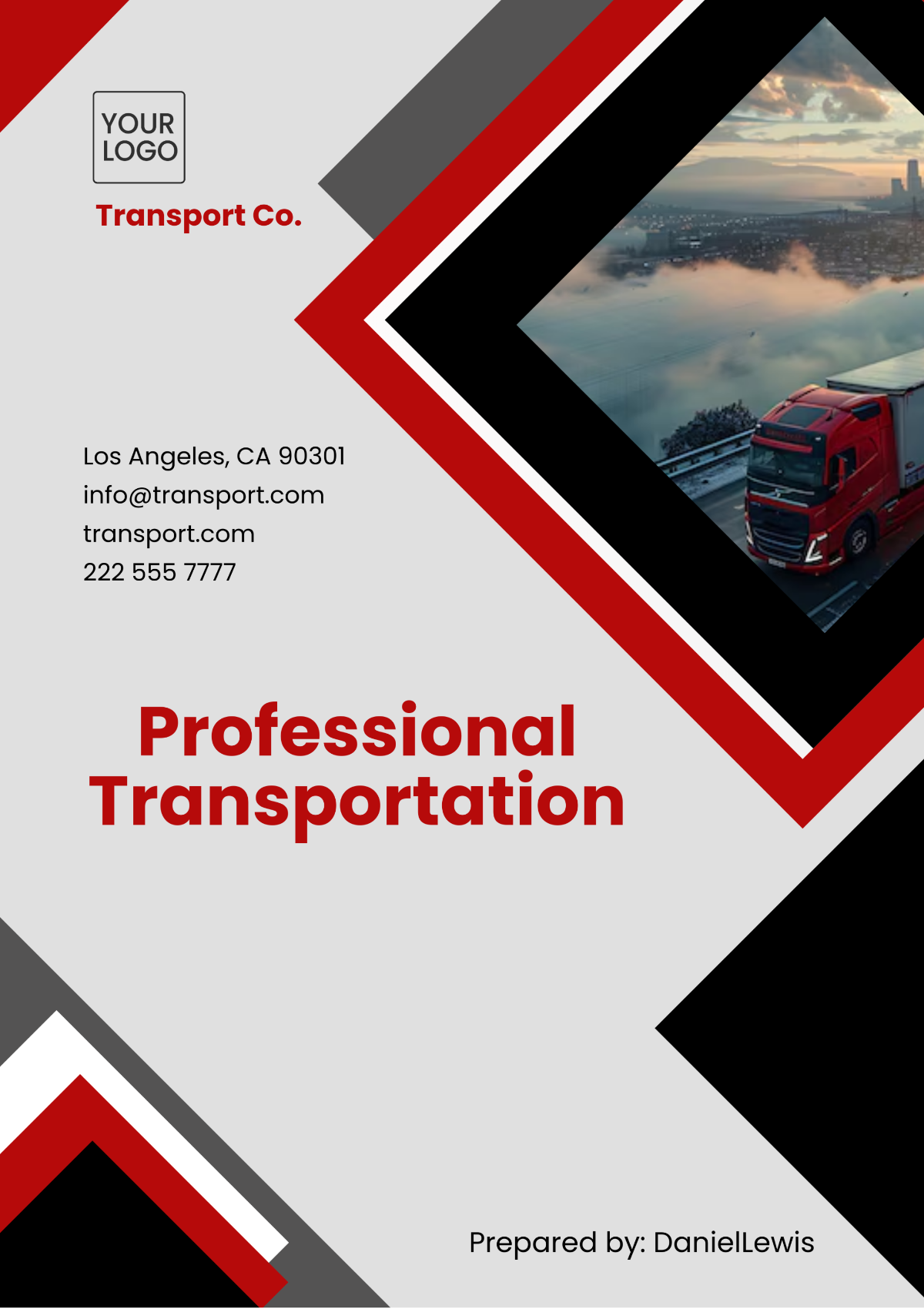
Effective Date: January 1, 2050
I. Introduction
[Your Company Name] is dedicated to maintaining exemplary health and safety standards for all transportation operations. This Transport Health & Safety Policy outlines the protocols and responsibilities necessary to protect employees, contractors, and other stakeholders involved in transport activities. Our goal is to ensure that all transport-related activities are conducted safely and efficiently, minimizing risk and promoting a culture of safety across the organization.
This policy is applicable to all transportation activities involving company-owned, leased, or third-party vehicles and services. Adherence to this policy is compulsory for all personnel and aligns with national and international regulations, including the Road Traffic Act (2050) and other relevant safety standards.
Regular reviews and updates to this policy will be conducted to ensure ongoing compliance with new legislation and advancements in transport safety practices.
II. Scope
The Transport Health & Safety Policy encompasses the following areas:
A. Employees
All personnel at [Your Company Name], including full-time, part-time, temporary, and contracted staff involved in transportation operations.
B. Vehicles
The policy applies to all types of vehicles used for company transportation, including:
Vehicle Type | Description |
|---|---|
Trucks | Heavy-duty vehicles for transporting large loads |
Vans | Vehicles for medium-sized cargo and personnel transport |
Buses | Vehicles used for employee transport |
Cars | Passenger vehicles for business use |
Motorcycles | Two-wheeled vehicles for quick delivery or small transport |
Bicycles | Pedal-powered vehicles used for short-distance travel |
Forklifts and Equipment | Warehouse vehicles for loading and unloading |
C. Contractors and Third Parties
Contractors, delivery services, and logistics providers engaged by [Your Company Name] for transport services.
D. Workplaces
This policy applies to all work-related locations, including:
Location Type | Description |
|---|---|
Public Roads | Highways, streets, and other public transportation routes |
Customer Sites | Locations where goods are delivered or services are provided |
Third-Party Facilities | Locations operated by external service providers |
Loading Docks | Areas where goods are loaded or unloaded from vehicles |
Distribution Centers | Facilities where goods are sorted and distributed |
III. Legal Obligations
A. Legislation Compliance
[Your Company Name] adheres to all relevant national and international legislation. Compliance includes:
Road Traffic Act (2050): Governs vehicle operation and road safety.
Occupational Health and Safety Act (2050): Covers general workplace health and safety, including transport-related hazards.
International Transportation Safety Standards (ITSS): Provides guidelines for global transport operations.
Local Regulations: Specific rules for vehicle usage, including those for transporting hazardous materials.
B. Employer Responsibilities
[Your Company Name] will:
Ensure all employees and contractors are trained and aware of their legal responsibilities.
Conduct regular audits to ensure compliance with all transport safety regulations.
Provide necessary resources to meet and exceed legal safety standards.
C. Employee Responsibilities
Employees must:
Comply with all relevant laws and regulations concerning transportation activities.
Report any safety violations, hazards, or concerns immediately.
Participate in required training and remain updated on any changes to this policy.
IV. Health and Safety Objectives
A. Zero Harm Goal
Our primary objective is to eliminate accidents, injuries, and fatalities associated with transportation activities. Strategies to achieve this goal include:
Implementing Best Practices: Adoption of industry-leading safety procedures and technologies.
Risk Assessment and Reduction: Ongoing evaluation and minimization of potential risks.
Ongoing Training: Regular training sessions to keep employees informed about safety procedures.
B. Safety Culture
To foster a strong safety culture:
Encouraging Communication: Open lines of communication for safety concerns and suggestions.
Valuing Hazard Reporting: Creating a culture where employees feel empowered to report potential hazards.
Feedback Mechanisms: Regularly updating staff on safety performance and improvements.
V. Roles and Responsibilities
A. Management
Overall Responsibility: Senior management is responsible for policy implementation and effectiveness.
Resource Allocation: Ensuring adequate resources for safety measures and protocols.
Oversight: Conducting regular inspections and audits to assess safety compliance.
B. Health and Safety Committee
Meetings: Regularly scheduled meetings to review safety procedures and incident reports.
Policy Amendments: Proposing changes to improve safety based on reviews and feedback.
Incident Investigation: Investigating accidents to determine causes and prevent recurrence.
C. Transport Operators
Safe Driving: Adhering to safe driving practices and vehicle maintenance procedures.
Training: Completing mandatory safety training sessions.
Health Checks: Undergoing regular health assessments to ensure fitness for duty.
D. Employees
Adherence: Following all safety procedures and guidelines outlined in the policy.
Reporting: Immediate reporting of any safety concerns or incidents.
Training Participation: Attending all required training sessions and staying informed about policy updates.
VI. Risk Assessment
A. Risk Identification
Transport Activities: Identifying hazards associated with driving, loading, and unloading.
Environmental Factors: Considering weather conditions, road conditions, and other external factors.
Vehicle and Driver Factors: Evaluating vehicle maintenance and driver fitness.
B. Risk Mitigation
Mitigation strategies include:
Vehicle Inspections: Regular inspections and maintenance checks.
Fatigue Management: Implementing schedules to prevent driver fatigue.
Loading Procedures: Ensuring secure loading and minimizing manual handling risks.
Weather Precautions: Avoiding travel in extreme weather conditions unless absolutely necessary.
C. Risk Review
Annual Reviews: Conducting annual reviews of risk assessments to ensure effectiveness.
Incident-Driven Updates: Updating risk assessments based on incidents and near-misses.
VII. Training and Education
A. Mandatory Training
Comprehensive Programs: Training on safe driving, emergency response, and legal requirements.
Specialized Training: For handling hazardous materials or operating specific equipment.
B. Ongoing Education
Refresher Courses: Regular refresher courses to maintain current knowledge of safety procedures.
Workshops and Seminars: Participation in additional learning opportunities provided by industry experts.
C. Incident Simulations
Practical Drills: Conducting simulations for emergency situations, including vehicle accidents and hazardous material spills.
Evaluation: Reviewing drill performance to identify areas for improvement.
VIII. Vehicle Safety
A. Vehicle Standards
Compliance: Ensuring vehicles meet all safety and emissions standards.
Licensing: Maintaining up-to-date vehicle licenses and registrations.
B. Regular Maintenance
Inspection Schedule: Vehicles must be inspected every [3] months or [50,000] kilometers.
Maintenance Checklist: Includes engine checks, brake assessments, and safety equipment functionality.
C. Technology Integration
Safety Technology: Equipping vehicles with advanced safety systems such as anti-lock brakes and lane departure warnings.
GPS Tracking: Using GPS for real-time monitoring of routes and driver behavior.
Dash Cameras: Installing cameras to record incidents and provide evidence for investigations.
IX. Driver Health and Safety
A. Driver Wellness Programs
Health Screenings: Regular health checks to ensure drivers are fit for duty.
Wellness Initiatives: Programs promoting nutrition, exercise, and mental health support.
Psychological Support: Access to counseling services for stress and anxiety management.
B. Fatigue Management
Driving Hour Limits: Enforcing a maximum of [8] hours of driving per shift.
Rest Breaks: Mandating [30] minutes of rest for every [4] hours of driving.
Scheduling: Minimizing night driving and ensuring adequate rest between shifts.
C. Personal Protective Equipment (PPE)
Provision: Providing necessary PPE at no cost, including high-visibility clothing, safety gloves, and helmets.
Usage: Ensuring proper use of PPE during loading, unloading, and other transport-related activities.
X. Accident and Incident Reporting
A. Accident Protocol
Immediate Actions: Ensuring safety and medical attention as required.
Reporting: Notifying management and completing an accident report with detailed information.
Documentation: Collecting evidence including photographs and witness statements.
B. Incident Investigation
Thorough Investigation: Reviewing all aspects of the incident to determine root causes.
Data Analysis: Examining vehicle data, driver performance, and environmental conditions.
C. Incident Review and Policy Update
Policy Revision: Updating the policy based on incident findings and recommendations.
Communication: Sharing lessons learned and improvements with all employees.
XI. Performance Monitoring and Review
A. Key Performance Indicators (KPIs)
Performance will be monitored using KPIs such as:
KPI | Description |
|---|---|
Accident Rate | Number of accidents per [100,000] kilometers driven. |
Vehicle Maintenance Issues | Frequency of maintenance issues reported. |
Fatigue Management Compliance | Adherence to driving hour limits and rest breaks. |
Training Attendance | Percentage of employees attending safety training sessions. |
B. Annual Review
Policy Review: Evaluating the policy annually to ensure compliance and effectiveness.
Data Analysis: Using performance data and incident reports to identify areas for improvement.
C. Continuous Improvement
Innovative Practices: Integrating new technologies and practices to enhance safety.
Employee Involvement: Engaging employees in the development and refinement of safety procedures.
- 100% Customizable, free editor
- Access 1 Million+ Templates, photo’s & graphics
- Download or share as a template
- Click and replace photos, graphics, text, backgrounds
- Resize, crop, AI write & more
- Access advanced editor
Promote safety with the Transport Health & Safety Policy Template from Template.net. This editable and customizable template helps you outline essential health and safety practices. Personalize it in our Ai Editor Tool to ensure compliance and safety in your transport operations.
You may also like
- HR Policy
- Restaurant Policy
- Company Policy
- Accounting Policies and Procedures
- Website Policy
- Privacy Policy
- Safety Policy
- School Policy
- IT and Software Policy
- Law Firm Policy
- Construction Policy
- Interior Design Policy
- Travel Agency Policy
- Education Academic Policy
- Security Policy
- Real Estate Policy
- Expense Policy
- Software Policy
